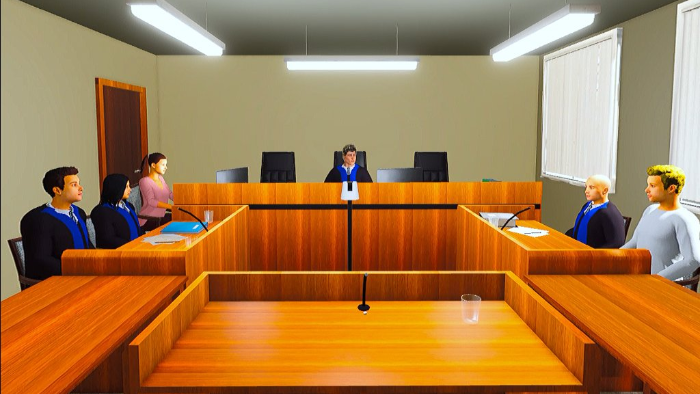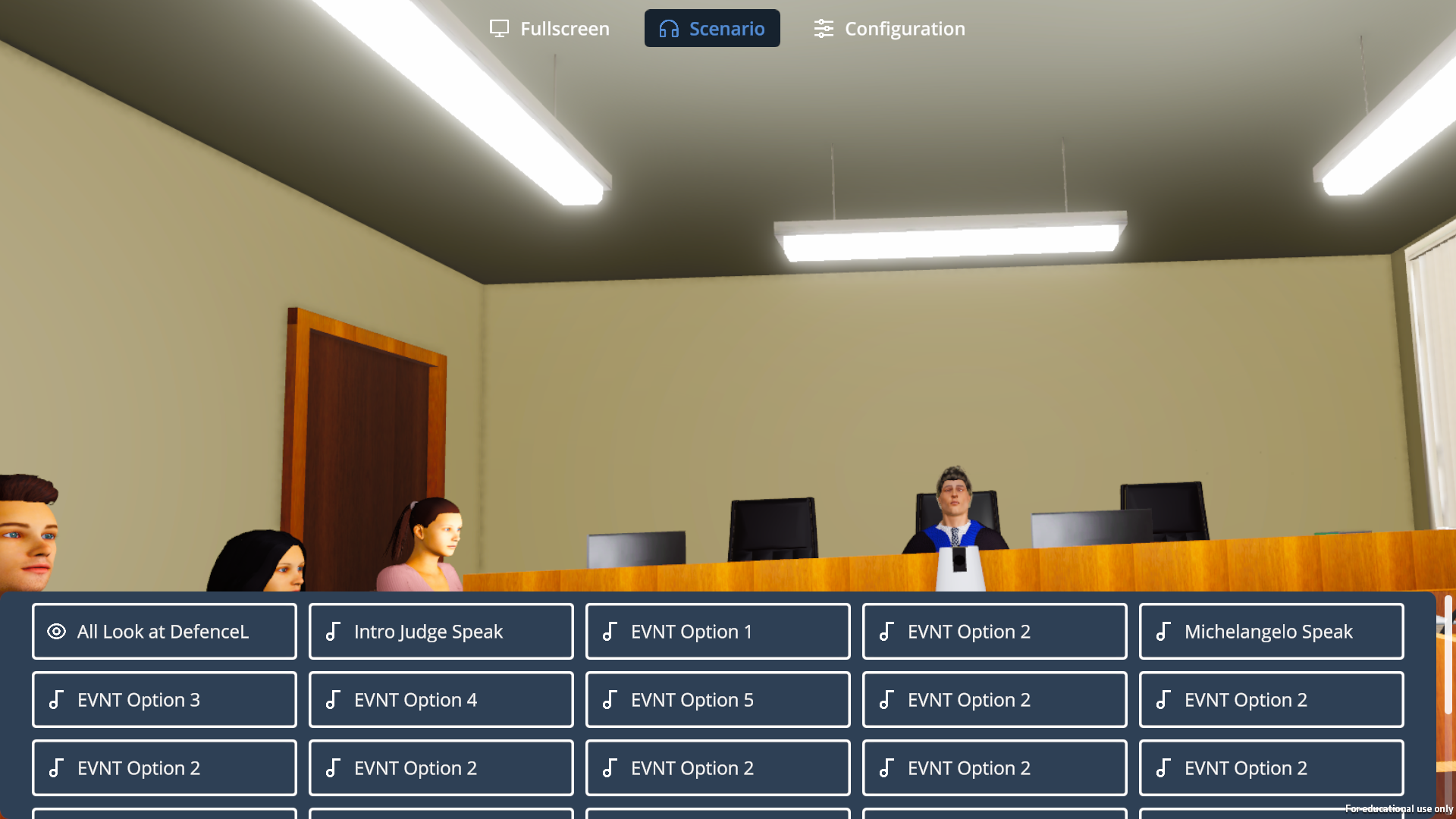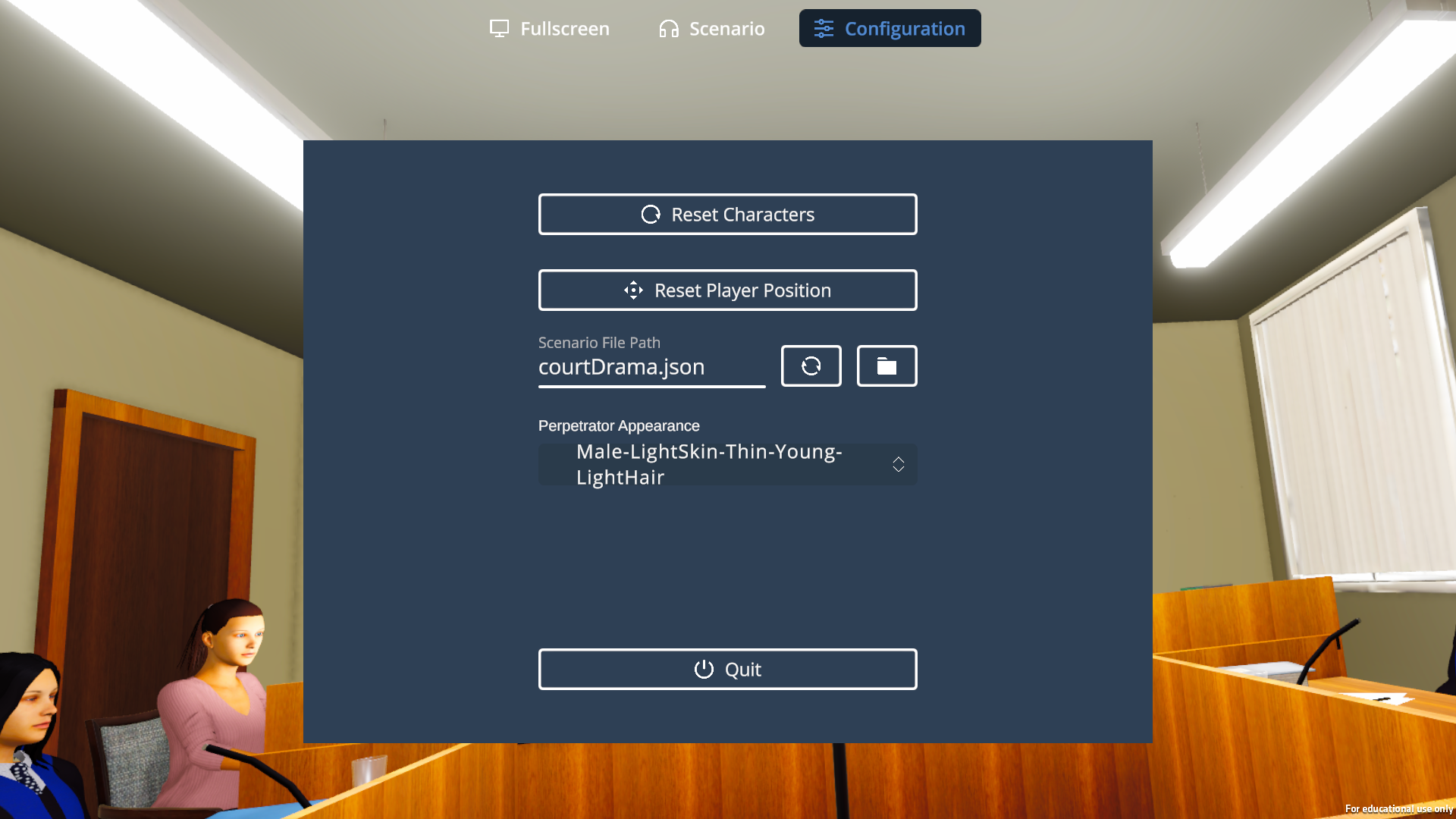Virtual Reality Courtroom



Navigating the legal system, especially after experiencing a violent crime, can be overwhelming and emotionally taxing for victims. The act of recounting traumatic events, answering probing questions, and potentially facing the perpetrator can be daunting.
The VR Courtroom is designed to ease this process. This immersive virtual reality experience prepares victims for courtroom proceedings, allowing them to familiarize themselves with what to expect in a controlled environment. Therapists can use this tool to introduce their patients to the courtroom experience gradually, ensuring they maintain control and minimize adverse psychological reactions.
The true power of this experience lies in its immersive nature. Virtual reality offers a realistic preview of the courtroom, helping victims build resilience and confidence. By practicing in the VR Courtroom, victims are better prepared emotionally and mentally for the actual proceedings, enhancing their well-being and capacity to seek justice.
Origins
The VR Courtroom project originated from the innovative efforts of a group of university students who later founded Statum. Since its inception in 2019, there has been an ongoing partnership with Reykjavik University's departments of Psychology and Computer Science, continuously refining the use of virtual reality to support victims of violence. To know more about the original experience click here. My contributions to this project focus on building upon the strong foundation they created, working towards meaningful improvements in the VR Courtroom experience.
VR Courtroom Key Features
1. Authentic Virtual Characters:
Experience the courtroom from the perspective of the victim. The virtual environment includes six meticulously detailed characters:
- Victim's Lawyer
- Prosecutor
- Note Taker
- Judge
- Defence Lawyer
- Perpetrator
Each character exhibits behaviors resembling real-life counterparts, such as looking around or blinking. Their ability to focus on specific targets and converse with synchronized lip movements and gestures contributes to a realistic and engaging environment.
2. Dynamic Courtroom Drama Manager:
The therapist or facilitator can orchestrate custom courtroom scenarios. This system allows for:
- Directing character attention with the
LookAtevent. - Initiating character dialogues with the
SpeakLineevent, accompanied by matching lip movements and gestures. - Creating fluid sequences with the
Chainedevent, enabling interconnected interactions.
Events are easily defined in a JSON configuration, transforming user inputs into vivid in-session actions.
3. Intuitive Controller Interface:
A dedicated GUI, unseen by the participant, provides the facilitator comprehensive control over the session. This interface offers:
- A real-time view of the participant's VR experience.
- Direct access to the Courtroom Drama Manager with actionable event buttons.
- Configuration tools to adjust elements, such as modifying the perpetrator's appearance, ensuring each session is tailored to the participant.
4. Responsive Hand Interaction via OpenXR:
Enhance the experience with interactive 3D hand models. Designed to be universally applicable, these hands mirror controller movements in real time. Participants can engage with objects on a virtual desk, offering a tactile dimension to the experience. With OpenXR integration, the feature ensures broad compatibility, validated on Oculus, Vive, and Varjo.